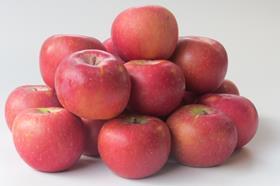
South Africa’s topfruit harvest is expected to drop this year because of the effect of drought and other adverse climatic conditions in the Western and Eastern Cape regions of South Africa.
Hortgro has predicted that the apple export crop will drop by 8 per cent, while pears will be down by 3 per cent.
The first estimate of the season comes at a time when all other fruit export crops from South Africa have declined because of the crippling drought.
It actually represents a reasonably good forecast given the fact that in Cape Town’s retail outlets consumers are jostling each other to buy bottled water in anticipation of the day that the water supply may be turned off.
The region is now in the middle of its driest period of the summer and not much relief in the form of rain is expected until at least the end of March, which will bring the region perilously close to D-day, when citizens will not have water anymore.
The apple crop is expected to drop from last year’s 33.4m cartons to 30.7m cartons and the pear crop from 17.4m cartons to 16.9m. In terms of both apples and pears it is the lowest crop since 2016.
“The drought that has troubled the Western and Eastern Cape production regions for the past three years has intensified over the last couple of weeks with very little relief for Western Cape farmers specifically,” said Hortgro.
The organisaton noted that producers in certain areas had been forced to implement drastic and in some cases ingenious plans to counteract the effect of the drought in an attempt to see the season through with very limited irrigation water.
“The production areas most severely affected are the Villiersdorp/Vyeboom, Koue Bokkeveld and Little Karoo. However, farmers have proven themselves to be resilient and are positive that they will be able to manage their limited resources optimally during 2018 with a below average export crop anticipated.
“Many new orchards have been established over the past five years that will have a significant impact on the total estimate as some of these trees come into production this season – somewhat countering the expected decrease as a result of the drought,” the group added.
According to the statement, in a normal year, these new orchards would have added 4.2m equivalent cartons of apples and 1.3m equivalent cartons of pears to the estimate, which relates to a 12 per cent decline on this season’s preliminary potential.
A combination of factors which include the drought have had a negative impact on production volumes, fruit size, and packouts.
“Hail, wind, and sunburn have also contributed to lower export volumes,' Hortgro added. 'The start of the topfruit season is about ten days later compared to last year.”



